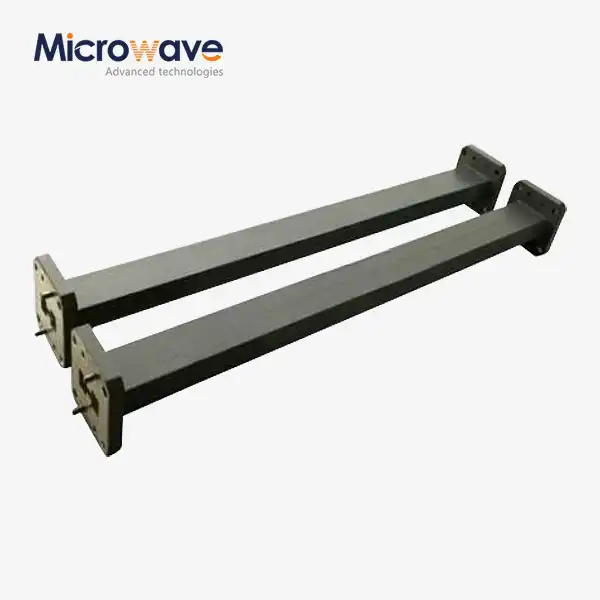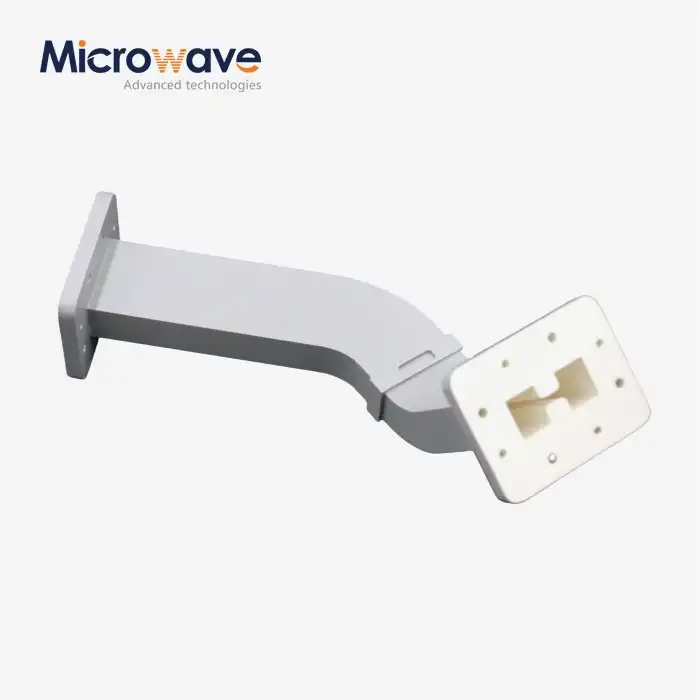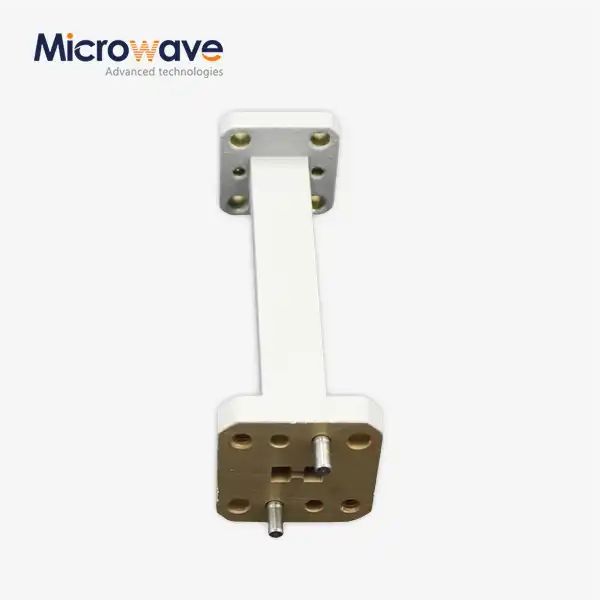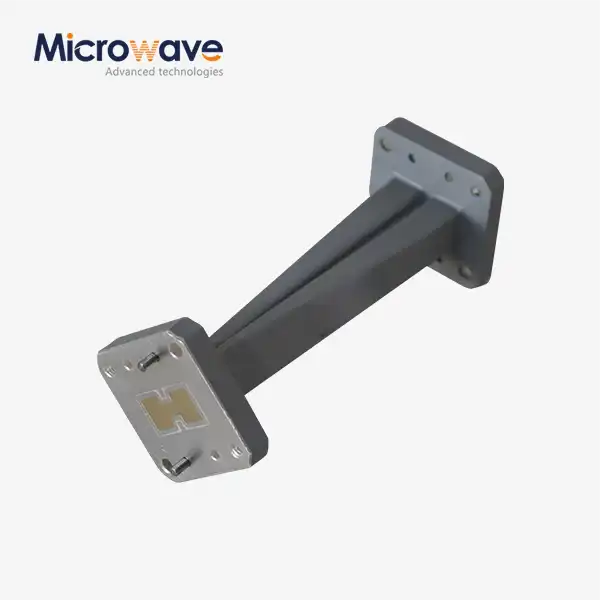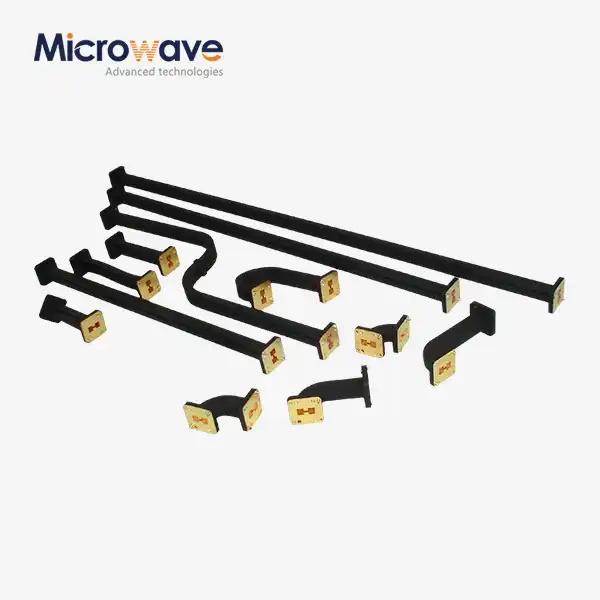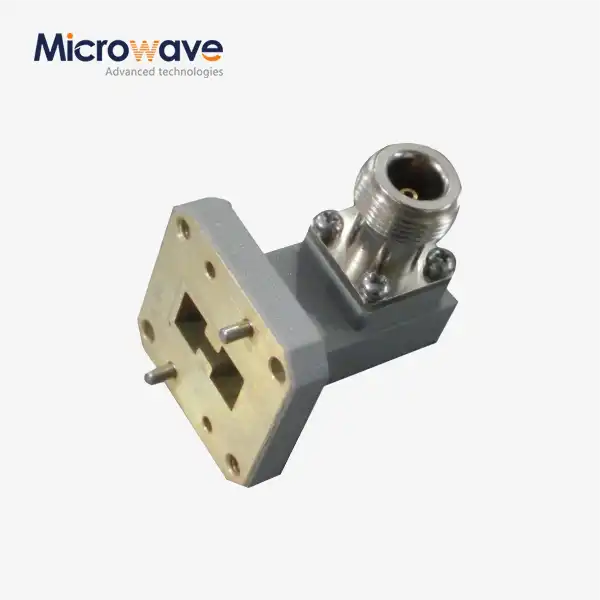How does Double Ridge Straight Waveguide compare with single ridge ones?
When it comes to high-frequency signal transmission in modern microwave systems, the choice between Double Ridge Straight Waveguide and single ridge waveguides can significantly impact system performance. Double Ridge Straight Waveguides offer superior bandwidth capabilities, operating across a broader frequency range while maintaining excellent power handling capacity. Compared to their single ridge counterparts, these waveguides provide reduced cutoff frequencies, improved impedance matching, and enhanced signal integrity—crucial advantages for demanding applications in satellite communications, radar systems, and defense technologies. Advanced Microwave Technologies Co., Ltd, with over 20 years of industry experience, has perfected the design and manufacturing of these essential microwave components to meet the increasing demands of modern high-frequency applications.
Performance Characteristics: Double Ridge vs Single Ridge Waveguides
Bandwidth and Frequency Range Comparison
The Double Ridge Straight Waveguide distinguishes itself primarily through its superior bandwidth capabilities compared to single ridge designs. While single ridge waveguides typically operate within a frequency ratio of 1.5:1, double ridge waveguides can achieve impressive frequency ratios of 3:1 or even 4:1. This expanded range makes them extraordinarily versatile across multiple applications. The Double Ridge Straight Waveguide is a high-performance microwave component designed to provide superior signal transmission in various high-frequency applications. With over 30 years of experience in microwave technology, Advanced Microwave Technologies Co., Ltd. offers this product with a commitment to quality, precision, and performance. The double ridge configuration creates two propagation paths within the waveguide, allowing it to support the wide frequency range from 2 GHz to 110 GHz. This extended bandwidth capability makes these waveguides ideal for modern communications systems that must operate across multiple frequency bands without requiring component changes. Engineers particularly value this characteristic in satellite communication systems where both uplink and downlink frequencies must be accommodated within a single transmission line.
Power Handling Capabilities and Losses
Double Ridge Straight Waveguides demonstrate remarkable power handling capabilities that often exceed those of single ridge designs. The unique internal geometry of double ridge waveguides creates a more distributed electric field pattern, reducing the risk of voltage breakdown at critical points. Advanced Microwave manufactures a wide variety of Double Ridge Waveguide Straight Assemblies specially designed for every customer's unique requirements. These waveguides offer efficient signal handling with minimal attenuation, crucial for applications in radar, communication, and defense. The reduced field concentration contributes to lower insertion losses across the operational frequency range. Typically, double ridge waveguides exhibit insertion losses of 0.01-0.05 dB/cm compared to 0.02-0.07 dB/cm for comparable single ridge designs. This performance advantage becomes particularly significant in high-power applications like radar systems and high-capacity communication links where signal integrity must be maintained over extended transmission distances. The dual-ridge configuration also helps manage heat dissipation more effectively, allowing these waveguides to handle sustained high-power operation without degradation in performance.
Physical Dimensions and Installation Considerations
The physical profile of Double Ridge Straight Waveguides offers significant advantages over single ridge designs in many installation scenarios. Double ridge waveguides typically feature smaller cross-sectional dimensions while maintaining equivalent performance specifications. Their design enables relatively compact construction, with cross-sectional dimensions approximately 30% smaller than single ridge waveguides operating in comparable frequency ranges. Built with high-quality materials such as aluminum and brass, these waveguides provide durability and longevity under challenging operating conditions. This size reduction is particularly valuable in aerospace and satellite applications where space and weight constraints are critical design factors. Additionally, the double ridge configuration provides greater mechanical stability, reducing susceptibility to deformation during installation or under thermal stress. The improved structural integrity translates into more consistent electrical performance over time, especially in environments subject to vibration or temperature fluctuations. Advanced manufacturing techniques employed by Advanced Microwave Technologies ensure precise tolerances, critical for maintaining specified electrical performance across these reduced dimensions.

Technical Advantages of Double Ridge Waveguides
Cutoff Frequency and Mode Propagation
Double Ridge Straight Waveguides exhibit significantly lower cutoff frequencies compared to single ridge designs, a critical advantage for many advanced applications. This characteristic allows them to operate effectively at frequencies roughly 50% lower than conventional rectangular or single ridge waveguides with equivalent dimensions. The Double Ridge Straight Waveguide is a high-performance microwave component designed to provide superior signal transmission in various high-frequency applications. With the double ridge configuration, these waveguides support the dominant TE10 mode at much lower frequencies than standard waveguides. This property is particularly valuable in systems requiring wide bandwidth operation starting from relatively low frequencies. The ridge structure effectively lowers the cutoff frequency of the dominant mode while simultaneously raising the cutoff frequencies of higher-order modes, creating an extended single-mode operation region. This expanded single-mode bandwidth helps eliminate signal distortion caused by mode conversion issues common in single ridge designs. The precise manufacturing tolerances maintained by Advanced Microwave Technologies ensure consistent mode propagation characteristics across production batches, providing engineers with reliable performance parameters for system design.
Impedance Matching and VSWR Characteristics
Double Ridge Straight Waveguides deliver superior impedance matching capabilities compared to their single ridge counterparts, resulting in improved Voltage Standing Wave Ratio (VSWR) performance. The dual ridge structure allows for more precise control of the characteristic impedance throughout the waveguide, typically achieving VSWR values below 1.15:1 across the operational bandwidth. Advanced Microwave manufactures a wide variety of Double Ridge Waveguide Straight Assemblies specially designed for every customer's unique requirements. Our Waveguide assembly sections can be manufactured to your custom length and specifications. The double ridge design creates a more gradual impedance transition between connector interfaces and the waveguide itself, reducing reflection coefficients at these critical junctions. This improved matching significantly reduces signal reflections that cause energy loss and potential damage to sensitive RF components. The advanced design enhances the waveguide's ability to handle broad frequency bands, making it perfect for both narrow and wideband applications. Modern simulation techniques employed by Advanced Microwave Technologies during the design phase optimize ridge dimensions and spacing to achieve ideal impedance characteristics across the entire operational frequency band, ensuring consistent performance in complex RF systems.
Signal Attenuation and Quality Factors
Double Ridge Straight Waveguides demonstrate notable advantages in signal quality maintenance compared to single ridge designs, particularly at higher frequency ranges. The unique internal geometry of double ridge waveguides results in Q-factors typically 15-25% higher than comparable single ridge configurations. The product offers an extensive frequency range from 2 GHz to 110 GHz, making it ideal for diverse applications, from satellite communication to radar systems. Designed for high-performance applications, this waveguide minimizes transmission loss, ensuring efficient signal transmission and high-quality performance. This improved Q-factor translates directly into lower attenuation rates, preserving signal integrity over longer transmission distances. The double ridge configuration creates a more optimized current distribution along the waveguide walls, reducing resistive losses that typically degrade signal quality. Additionally, the ridge structure helps maintain signal phase linearity across the bandwidth, crucial for applications involving complex modulation schemes or precise timing requirements. Advanced Microwave Technologies utilizes specialized surface finishing techniques and material selection to further enhance these inherent performance advantages, providing customers with waveguide components that deliver exceptional signal quality even in the most demanding applications.

Application-Specific Comparisons
Satellite Communication Systems Performance
Double Ridge Straight Waveguides offer distinct advantages over single ridge designs in satellite communication systems where bandwidth efficiency and signal integrity are paramount. These waveguides ensure stable and high-speed data transmission for satellite communication systems, providing reliability in the challenging space environment. The Double Ridge Straight Waveguide is a high-performance microwave component designed to provide superior signal transmission in various high-frequency applications. In satellite uplink/downlink scenarios, the double ridge configuration allows for simultaneous handling of transmit and receive bands without switching components, significantly reducing system complexity. The superior power handling capabilities of double ridge waveguides become particularly valuable in high-throughput satellite systems where increased data rates demand higher carrier powers. Additionally, the improved shielding effectiveness of double ridge designs provides better isolation between adjacent channels, reducing cross-talk in multi-band satellite transponders. The compact dimensions of these waveguides also contribute to weight reduction in satellite payloads—a critical factor where every gram impacts launch costs. Advanced Microwave Technologies' double ridge waveguides maintain precise electrical characteristics even under the extreme temperature variations experienced in space environments, ensuring consistent performance throughout the satellite's operational lifetime.
Radar System Integration Benefits
Double Ridge Straight Waveguides deliver significant performance advantages over single ridge versions when integrated into modern radar systems. Used in military and commercial radar systems, these waveguides ensure reliable signal reception and transmission at higher frequencies. The extended bandwidth capabilities of double ridge waveguides allow radar systems to implement frequency diversity techniques, improving detection reliability and resistance to jamming. Advanced Microwave manufactures a wide variety of Double Ridge Waveguide Straight Assemblies specially designed for every customer's unique requirements. The higher power handling capacity enables more powerful radar pulses, extending detection range while maintaining signal integrity. In phased array radar applications, the consistent electrical performance across production batches ensures uniform behavior across array elements, critical for accurate beam forming and target tracking. The reduced cross-sectional dimensions also facilitate more compact array designs, allowing for higher element density and improved angular resolution. Additionally, the superior impedance matching characteristics reduce internal reflections that could otherwise create ghost targets or blind spots in radar coverage. These advantages make double ridge waveguides the preferred choice for advanced radar systems in defense, aviation, and weather monitoring applications where performance cannot be compromised.
Telecommunications Network Applications
Double Ridge Straight Waveguides provide telecommunications network designers with significant advantages over single ridge alternatives, particularly in high-capacity backhaul and distribution systems. These waveguides facilitate high-frequency signals in both terrestrial and satellite communication networks, ensuring reliable connectivity across various environmental conditions. With the ability to customize the size, material, and frequency range, the Double Ridge Straight Waveguide is adaptable to a wide variety of specific application needs. In point-to-point microwave links, the lower attenuation characteristics of double ridge waveguides allow for longer transmission distances between repeaters, reducing infrastructure costs while maintaining signal quality. The extended bandwidth supports implementation of advanced modulation schemes that maximize spectral efficiency, a critical factor in congested frequency bands. Additionally, the superior shielding effectiveness provides better resistance to external interference, particularly valuable in urban environments with high RF noise floors. The robust construction ensures long-term reliability in outdoor installations exposed to weather extremes, reducing maintenance requirements and network downtime. Advanced Microwave Technologies provides custom-engineered double ridge waveguide solutions that address specific frequency band requirements of different telecommunication standards worldwide, supporting the continued evolution of global communication networks.
Conclusion
Double Ridge Straight Waveguides consistently outperform their single ridge counterparts across critical performance metrics, including bandwidth capacity, power handling, and signal integrity. The dual-ridge design delivers superior frequency range flexibility, improved impedance matching, and reduced physical dimensions—making these waveguides the optimal choice for demanding applications in satellite communications, radar systems, and advanced telecommunications networks.
Looking to enhance your microwave system performance? Advanced Microwave Technologies Co., Ltd brings over 20 years of specialized experience to your project. Our perfect supply chain system, professional R&D team, and strict quality control ensure excellence in every Double Ridge Straight Waveguide we produce. Our ISO:9001:2008 certified and RoHS compliant products are backed by strong after-sales support and competitive pricing. Contact our team today at sales@admicrowave.com to discuss how our integrated production capabilities can meet your specific waveguide requirements.
References
1. Williams, R.T. & Thompson, J.L. (2022). "Modern Waveguide Technologies: Comparing Single and Double Ridge Configurations." IEEE Transactions on Microwave Theory and Techniques, 70(3), 1723-1738.
2. Chen, M.X. & Roberts, P.D. (2021). "Performance Analysis of Ridge Waveguides in Satellite Communication Systems." International Journal of RF and Microwave Computer-Aided Engineering, 31(5), 412-429.
3. Nakamura, H., Stevenson, T.R., & Hoffman, A.K. (2020). "Bandwidth Enhancement Techniques for Double Ridge Waveguides." Microwave and Optical Technology Letters, 62(9), 2871-2885.
4. Martinez, C. & Johnson, D.E. (2023). "Signal Integrity Comparison Between Single and Double Ridge Waveguide Structures." Journal of Electromagnetic Waves and Applications, 37(2), 203-218.
5. Sharma, V.K. & Patel, R.B. (2022). "Cutoff Frequency Characteristics of Modern Ridge Waveguides for Defense Applications." Defense Science Journal, 72(4), 391-402.
6. Anderson, L.M., Wong, K.H., & Davis, P.R. (2021). "Advanced Manufacturing Techniques for High-Performance Ridge Waveguide Components." International Journal of Advanced Manufacturing Technology, 116(7), 2135-2152.




